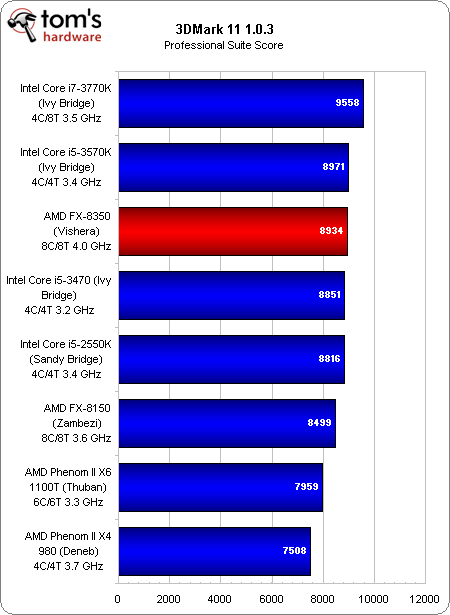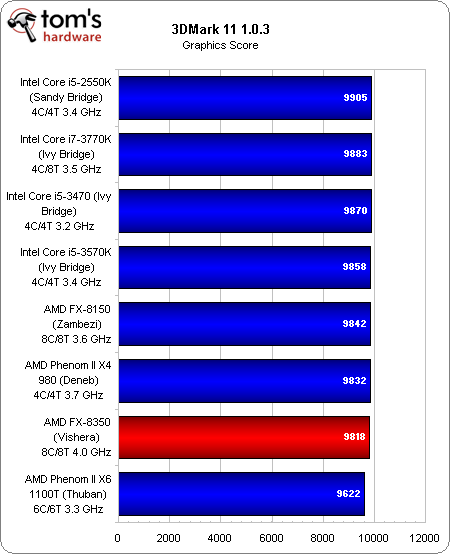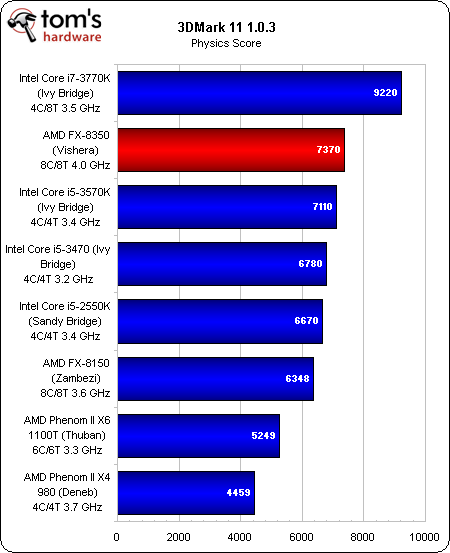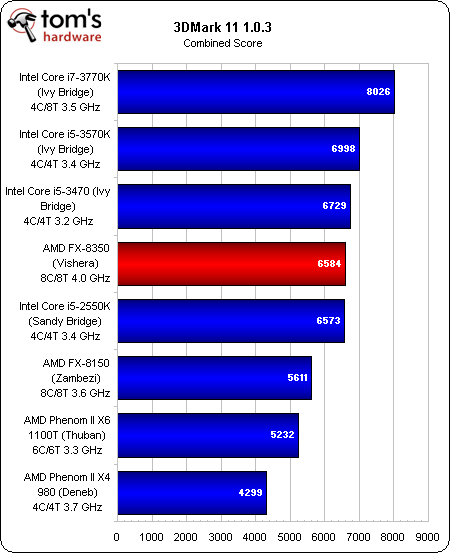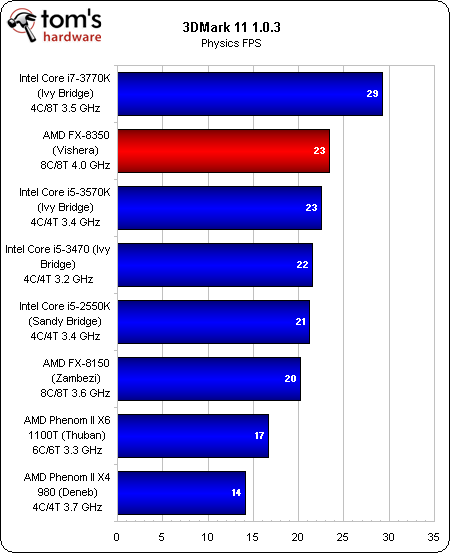AMD FX-8350 Review: Does Piledriver Fix Bulldozer's Flaws?
Last year, AMD launched its Bulldozer architecture to disappointed enthusiasts who were hoping to see the company rise to its former glory. Today, we get an FX processor based on the Piledriver update. Does it give power users something to celebrate?
Benchmark Results: 3DMark 11
Futuremark’s attempt to capture overall gaming performance with its 3DMark benchmark sees AMD’s FX-8350 improve on the FX-8150 by several hundred points, placing it behind the pricier Core i5-3570K and Core i7-3770K CPUs.
That’s a really big generalization, though. The sub-tests are where we see how each platform affects the overall gaming experience.
The only CPU that seems to impact graphics performance is AMD’s Phenom II X6 1100T, but only by a couple of percentage points. Everything else is on almost-identical footing as the Graphics suite purposely isolates our GeForce GTX 680.
The Physics sub-test is where processor performance plays a predominant role, as Futuremark partitions the simulated world it creates into several isolated regions, creating multiple threads.
When it’s fully taxed, the FX-8350 is able to best Intel’s Core i5-3570K, a $230 quad-core chip. Turning on Hyper-Threading on the Core i7, however, kicks performance up another notch.
The Combined sub-test also exhibits plenty of difference between processors. It’s threaded insofar as the simulated world is partitioned into multiple regions. The outcome isn’t the same as the Physics test, though, because there’s a considerable graphics workload applied as well. As we’ll see in the real-world game testing, AMD’s chips have a tendency to bottleneck our GPU, and so the FX-8350 slides down in the field behind three Ivy Bridge-based processors.
Get Tom's Hardware's best news and in-depth reviews, straight to your inbox.
Current page: Benchmark Results: 3DMark 11
Prev Page Benchmark Results: PCMark 7 Next Page Benchmark Results: SiSoftware Sandra 2013 Beta